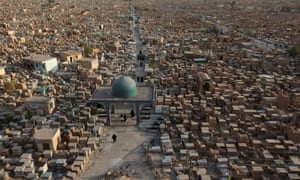
- Tombs are seen at Wadi al-Salam, Arabic for ‘Peace Valley’, in Najaf, south of Baghdad. It’s considered to be the largest cemetery in the world. All photographs by Alaa al-Marjani/Reuters
A man prays inside the shrine of Imam Mahdi at the Wadi al-Salam cemetery.
People line up to collect blessed water inside the shrine of Imam Mahdi.
A woman takes a selfie inside the shrine. The cemetery is special for Shia Muslims as it surrounds the mausoleum of their first imam, Ali Bin Abi Talib, a cousin and son-in-law of Prophet Muhammad.
A woman washes the grave of her relative.
An undertaker smokes his shisha.
These containers are used for washing the graves at the cemetery.
As land becomes scarce, the cost of a standard 25 sq metre family burial lot has risen to about 5m Iraqi dinars (£3,240).
A young boy digs a grave. The pace of daily burials rose to 150–200 after Isis overran a third of the country in 2014.
Graves are built with baked bricks and plaster, and among the tombstones are domed family crypts and underground burial vaults.
A municipal worker at the cemetery.
The cemetery covers roughly 10 sq km and holds at least five million graves.

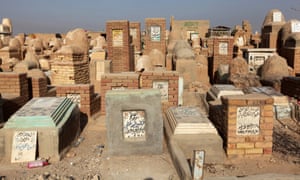
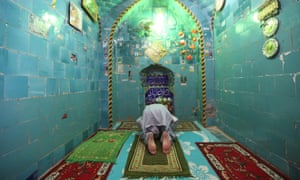
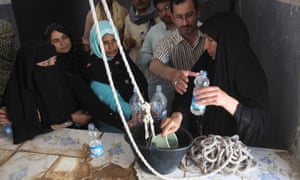
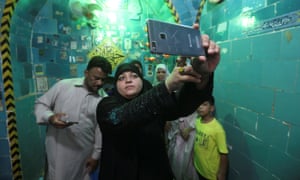
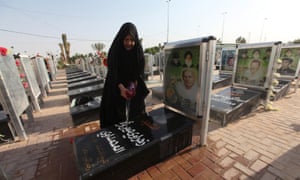
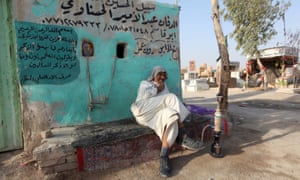
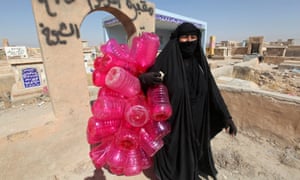
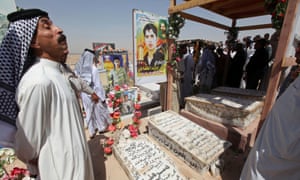
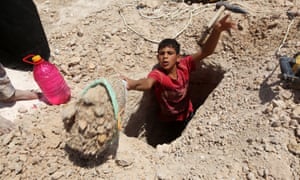
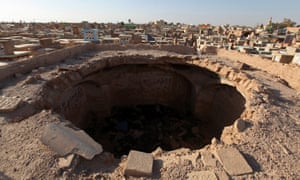
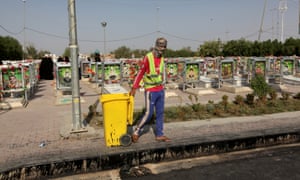
No comments:
Post a Comment